|
Just a QUICK one to remind you/tell you that it is EARTH HOUR tomorrow (19.3.16) 20.30 to 21.30. It is in its 10th year. Taken off the internet is this "Earth Hour is the world’s largest environmental event organised by WWF. It will take place at between 8.30pm and 9:30pm on Saturday 19th March, when millions of people in over 170 countries across the world switch off their lights for one hour to show they care about the future of our planet.Earth Hour is not about how much energy is saved during the hour. Rather, it’s a chance to put the spotlight on the issues facing the planet and to inspire millions across the world to live more sustainably.Switching off the lights is just the beginning. The idea is that the choices we make and actions we take past that hour can help reduce the impacts of climate change on our planet, its wildlife and future generations.Earth Hour is for everyone and is a global event which unites people all around the world who care about our planet - and it's so easy to take part." Dine telephoned with a TREMENDOUS sighting just off our road bridge FOUR/FIVE HAMERKOPS and took these photographs.(3243, 3244 &3254) Alison rushed down and found five which Dine subsequently found in 3244 - with a grey heron in the background and Little egret in front. (ED. I have only ever seen 2 birds together, but on reading in warmer climes they can nest communally with up to seven birds. Here they may have gathered together because of the HUGE food source that we have around our bays, at present). "Please check the second photograph, nr 3244 – there are 5! If you enlarge the photo, you will see him just behind the debris. Gotcha! " (Dine van Zyl - Finalist Best Cookbook in the World "I cook - sometimes even in the kitchen!") Common Sandpiper and Egyptian Goose with her nine eggs, still on The Point. I hope that you all have a wonderful long weekend and Easter hol period. ENJOY lots of sightings, observations and EVERYTHING that is around you. IF TIME, please do not forget to keep that bowl of water out for birds, tortoises etc., to gather those awful bits of plastic on our beaches and have a GOOD RELAX. The Eco Walk is all set for the 23rd and if bad weather the 26th March 2016.
0 Comments
Amazingly, we are heading towards Public hols, School, University hols and religious hols sooooooooo I have been asked to doan Easter hol Eco Walk. Please diarise Wednesday 23rd. March 2016 at 8.00 outside The Drummond Arms. If, the weather is awful then we will try again on 26.3.16 - even though a crayfish day. There will be LOTS of "flora" help and for anything that MOVES !! Also, our beaches still NEED us, so do wander along collecting any rubbish on them and in particular the "tiny" bits of plastic. This is all VERY therapeutic and perhaps that spare 30 minutes can be used on a regular basis to help our sea and bird life. Even get those children and grandchildren to help out - very educational !
Sightings : Aves. 1. a pair of Common Sandpiper at the rocks on The Point.(4633 - awful photograph but it does show the breast band !) 2. The Egyptian Geese have still got nine eggs with the female doing all the incubating and the male on guard. They ought to hatch within the next twelve days and they are precocial with the parents taking them down to the sea almost immediately which is where they become even more vulnerable. 3. If, you are missing the numbers of the Cape Sugarbird in your garden that is because the White Sugarbush - protea repens has started flowering (early). Gardeners: From Annies Annuals website " Birds & bees swoon over this spectacular, super easy, extremely reliable & long lived 8’ x 6’ shrub. Way back in the late 1600’s, European settlers in South Africa collected the abundant nectar from the flowerheads, which they boiled down into a thick red syrup used as a sugar substitute and cough medicine - thus the common name “Sugarbush”. Blooms Fall through Winter with ivory flowerheads. Cut flower rockstar! As blooms dry out and brown, seedheads bear resemblance to upside down ice cream cones. Sweet! Free draining, acidic soil is best. If you have clay soil, amend with rotted pine needles, or something else that is both nutrient poor & acidifying. Avoid feeding with anything with phosphorus, as this is a sure fire way to kill the plant. Once established, it is a drought tolerant, low care, disease free beauty – tolerant of sun & wind & impervious to deer. From South Africa, of course. Hardy to 25 degrees." (4636 & 4637) 4. From Alastair :- There was frenetic activity in front of us this morning.(12.3.16) A shoal of maasbankers came in close and into the long pool. No gannets, but hundreds of cormorants and a flock of hardworking terns of all the usual kinds being harassed by those layabout gulls (although one gull made a clever catch of a falling fish dropped by a tern). One immature gull was so gorged that he/she took several minutes to get a fish down the throat. The fish were so plentiful that all except the terns needed to have a pause to digest. Of course, the cormorants had to hang themselves out to dry now and again. Further out were seals and a whale. In the bushes was a flock of bulbuls, a pair of fiscal flycatchers and (I think) a few canaries. Wonderful crowd to watch. We eventually came in for breakfast at 10.30! 5. Look out for the early Cape Gannets which have probably come from the West Coast looking for fish gorging on the red bloom, ours is NOT toxic but on the West Coast it is toxic. Shells 1. A fisherman showed us these on the main beach - he had never seen the like before. I checked them out and they are a member of the Janthinidae Family and this one is Janthina janthina - the common violet sea snail. From Shells of Southern Africa by Deidre Richards "these delicate molluscs live a drifting life on the surface of the warm water oceans, suspended by a float of bubbles. they feed on plankton and are often washed ashore after stormy weather in the summer months, particularly on the Muizenberg beaches of False Bay." Ed: it had been stormy weather with wind from the north west. (4632) Mammals 1. Cape Clawless Otter - they are still with us although I have had no reports of any sightings since November 2015 (4632 - taken at the bottom of Bonny Banks steps) Flora 1. This wonderful Amaryllis belladonna (4631) - the March Lily, photographed at 147, Rocklands Road. Gosh, this was meant to be a quick report mentioning the ECO WALK and the therapeutic participation of collecting beach and sea rubbish !! Enjoy, enjoy, enjoy, there is just sooooooooooooooooooooo much to see, hear, find and observe here. Keep all the sightings coming. Definitely time for a Sunday lunch glass of wine ! Hope to see you on the 23rd. Tweet **PLEASE put water out for the tortoise in this drought, they are in GREAT need of it. ** Purple Heron taken yesterday opposite Hanna and Nick ** 9 Goose eggs ** Spot the Goose ** ........ and here it is defending the eggs RED TIDE **Oh dear it is EVERYWHERE - after extensive research done by Alison, thank you - difficult to get anyone to acknowledge that there really IS a problem with the best person locally being Annette at Kleinmond Fisheries Dept and they were helpful at Hermanus Ops Room. So , eventually from Alistair Bushby of DAFF (Dept. Agriculture, Fisheries & Forestry) but head of Marine Aquaculture Research and Development said "The West Coast has been closed for ALL shellfishing but because we are having phosphorescence (seen wonderfully here last night) it is NOT toxic, but it is inadvisable to collect shellfish here until further notice. Swimming and diving is alright but do not ingest a lot of water. What is required now is a good storm to break up the water and therefore disperse the bloom" Click here to download a recent article on Red Tide or from the MARD website :- Harmful Algal Bloom Research Harmful algal blooms (HABs) cause harm by producing toxins that accumulate in shellfish or fish, or through the accumulation of biomass that may impact marine life, food webs and the environment in negative ways. The number of harmful blooms, the economic losses from them, the resources affected, and the number of toxins and toxic species are all considered to have increased dramatically in recent years. HABs have particularly adverse effects on aquaculture ranging from reduced growth and reproduction to mass mortalities, which lead to significant losses in harvestable resources, and to spoiled or contaminated products. The needs for research and monitoring are many. New tools and approaches are required to detect, analyze, predict, and manage HAB outbreaks and the associated problems they may cause. The major priorities and needs for additional capability and understanding fall into three thematic areas: Blooms, Toxins and their Impacts; BloomEcology, Dynamics and Prediction; and Seafood Safety, Monitoring and Public Health. Enjoy your swim!
Tweet noticed red tide in Gordons Bay on Thursday 25th Feb but didnt see evidence here until today 27th Feb
"At noon driving down the hill on Clarence Drive the swathes of red tide in the sea are very obvious -- but it is further out; not right along the shoreline. I dont know if it is the is the toxic red tide or if it is benign - but thought it may be worth alerting people through Tweet that they should enquire before taking mussels." 2. the Egyptian Goose nest on the Point now has nine eggs. 3. Giant Kingfisher on our upper stoep this morning at 6.45 making a tremendous noise and frightening all the smaller birds. Have GREAT evening, Tweet ** WHERE is this RAIN - gardens are deserts, helped along by the Cape Molerat (georychus capensis), the Cape Francolins and Guineafowls (4601/4603), "our" river has dried up which is TWICE this year the first time in eighteen years (4613)
And a sole has been found in the lagoon (by Ral Meredith) unable to get back to the sea. Heteromycteris capensis - the ‘Cape Sole’ - RooiEls - 7. 2. 2016 Message from Ral Meredith: “During the 1980’s Bruce Relly, who is a resident of RooiEls, told of an event which had taken place in about 1983, when he was walking along the beach,and saw a Cape Clawless Otter running across the sand carrying an object in its mouth. He decided to give chase, and the Otter then dropped the item, which, upon inspection, was found to be a Sole ! Being rather partial to Sole, Bruce took the prize home and cooked it for breakfast ! This was an astonishing story, but clearly accurate. What it did, was (a) establish that Soles were present in the RooiEls estuary, (b) establish that Otters , include Soles as part of their diet, along with many other fish and shellfish. For the first time since August 1986, and up to 6th Feb 2016, the RooiElsriver was seen to have stopped flowing into the sea. The `lagoon ‘ was now a still stretch of water cut off by about 50 meters of sand to the shoreline. The water in the lagoon was warm and contained a great deal of aAlgae. One of our family members, Richard Berg, mentioned that he had seen a Sole ,motionless, in a puddle adjoining the still water of the lagoon. The writer collected the Sole, placing it in a plastic bag before putting it into the deep freeze. There was no hint of decay .This fish weighs 250 grams, its length is 27.5 cms, and its width, with pectoral and dorsal fins not extended is 10.3 cms. It is brown in colour on its upper side, but with fine darker dots which resemble dark sand. It is near white on its underside. This record suggests that the Cape Sole is an inhabitant of the RooiEls estuary. Professor Charles Griffiths of the Department of Biological Sciences at UCT, has suggested that the fish possibly succumbed due to high levels of fresh water in the lagoon. He explained that if fresh water was still flowing in from the catchment area of the RooiEls river, the accumulating fresh water forces the saline water out towards the sea lowering the salinity to a point where marine fish die. The CSIR Report 1982 Griffiths “Estuaries of theCape ,” number 8. CSIR report 407 part 2 report no 8 ( CSW10)”. This report contains many interesting observations. In one instance: December 1979- ` During the ECRU survey in Dec 1979, no water was flowing out to the sea at low tide.’ [ It would be interesting to know how many times the river has ceased to flow into the sea in the last 100 years ! ]. What is of particular interest is the listing of aquatic fauna found in the river. One specimen ofHeteromycteriscapensis- the Cape sole - is listed. The only other fish mentioned in the table was Lithognathusmormyrus, the `Sand steenbras.’ In 1968 GF van Wykaslo netted White Steenbras, Gobies and Harders. In 1978 S.Grindley recorded Psasmmagobiusknysnaensis (Knysna sand-goby) Heteromyteriscapensis (Cape sole) Lithognathusmormyrus (Sand steenbras) and Hepsetiabreviceps (now Atherinabreviceps – the Cape silverside). The CSIR report is worth reading , especially for those who may be interested in the finer points relating to RooiEls, its fauna , flora and all the scientific information of the area that has been presented. There will, hopefully, be more information in regard to the status of the Cape Sole in our estuary in due course.” Click here to link to the CSIR Report 1982 Then even the Praying Mantis are thirsty (4580). The sea quarris(Euclea racemosa) have "gone mad" wth MILLIONS of juicy berries with our resident Kay even making jelly with them (2994, 2997, 2001, 3013, 3020) and an absolute treat for the Baboons but NOT for the trees !! 1. "Have had a very "wildlife" morning - with a seal very active right here close to the rocks, the usual visits in my lounge from the chat, an unusual one from a panicking, messing, starling and then for first time a dassie came right into the house and I dont even feed them. He wasnt shy - but Kira did come up from my office and that sent dassie scuttling! 2. This year has seen a real profusion of flowers and fruits on all the plants. The pink everlastings or sewejaartijies (Syncarpha canescens) make the fynbos from Kleinmond to Arabella look as if cans of paint have been splashed from above. The Sea Guarri (Euclea racemosa) (also known as the Dune Guarri), has seen the baboons thinning the hedgerows. And our walls, decks, railings and roofs are painted purple from the continuous starling banquets. So why should we be left out of this bounty .......... they are sweet, rich, beautiful berries. But dont eat too many in their raw state or your tummy will know about it. As jam they have far too many pips. So the only thing is to make jelly -- and it is lovely. Boil the fruit up with some lemon (juice and rind), drain it and then add sugar and simmer until it will set. They are quite sweet so about half the weight in sugar - but depends how much lemon you used. ** Moving on to other sightings :- a) Black Oystercatchers are having a torrid time. They lay one egg at the side of the lagoon(found by Sandra) and then it disappears, they lay another egg (found by Duncan) and it disappears. Another pair lay two eggs in the rocks on the Point - great spot they thought (thank you Sandra) but alas they have also disappeared - these probably taken by the White-necked ravens or baboons, who are very active at present because of the berries. b) but the good news is .......................... that three metres from that nest an Egyptian Goose has laid six eggs c) Grey Heron flying in (for email.jpg Sandra Yeo) - a constant Rooi Els visitor. d) The number of Hartlaub Gulls has been increasing annually particularly with all the small fish around. e) a Greater-striped Swallow nest destroyed by baboons in Hotel Crescent - one egg shell was found at the base of the nest (4622). This is another nest of longevity (min 8 years), being taken over by White-rumped Swifts then back again and rebuilt by the Swallows. Next season, perhaps even Rock Martins !! f) "our " Greater-striped Swallow is now on to lining their nest - even helped by putting cotton wool down and looking like Father Christmas (4622) !! Are they practising for next season or are they just late breeders - watch this space .................................. g) The Paradise Flycatcher is still with us(this morning), but still only a female - ahhhhhhhhhhhhh !! Sorry no photograph as yet. Has anyone else seen one or two ? h) A Laughing Dove has been in our garden on and off for a couple of days. i) Lynne telephoned to say that she had over 30 Cape Wagtails on her roof and in her garden just having a chat, so quoting from Roberts 7 (by the way 8 is in the making) "occurs singly, in pairs or family parties, or in loose flocks of up to 50-100 birds, confiding with each other " ** to Flora a) Unfortunately, I have heard nothing from THOSE BOTANISTS out there - but here is something for YOU - an April Fool and a Candelabra -Haemanthus coccineus/Brunsvigia orientalalis flowering really early – these taken in late February in Rooi Els. Our data "firsts" are mid March to mid April ! And Exciting news Follow the action on Facebook about the Tsitisikama Marine Reserve Minnows can WIN !! The Friends of Tsitsikamma are pleased to announce a victory in their court case against the Department of Environmental Affairs and South African National Parks. So now it has been WILD , WINDY and FIERY for what seems like a month but even this weather has brought GREAT sightings and happenings - "our" leopard Scott has shown up in "our" cave during the day, a pair of African Pipits were in the sand dunes near The Point and the Mute Swan has returned. Sightings : 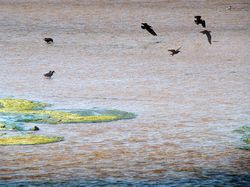 1. Four pairs of African Oystercatchers seen by Sandra "Not a good pic, by any means, but this a 'sandwich' of Oystercatchers having a spat. Not quite sure what is going on but two are being seen off by two adults with, presumably, a youngster left with another adult to forage quietly." 2. A yellow-billed Kite was seen circling over Rooi Els on 16.1.16 (last seen Feb. 2014) 3. From Ian in Rocklands Road - "On the day we left heard a red wing starling commotion and saw them giving what I thought a chestnut coloured kestrel an extended hard time. Didn't get a strong sighting but presume we do get (rock or lesser?) kestrels in area? Ed: There is a red-winged Starlings nest at the Blakes so the parents were seeing off the Rock Kestrel which would take their nestlings and/or eggs. 4. From Evette - She observed that five white-necked Ravens were pecking and harrying a small seal cub on the rocks in sight of her house. She checked out the young seal but it had been bitten by probably a shark but CLEVERLY it hid its face into the rocks whenever they were about so that they did not peck its eyes out ! The seal after four days disappeared (hopefully on the recent full moon high tides !) 5. From Lynne – "her" Paradise Flycatchers have arrived back with a female being seen on 24.1.16. " Ed: The records show that they can arrive any time from November although last year Lynne reported them only again in January through to April. "She stayed in her garden in her bird bath arriving at approx 7.00 and was there on and off all morning. Also, 2 sets of Cape Francolins, one with 4 chicks and the 1 legged Francolin with 5, who is a marvellous mother and when startled they gather under her rather than just scattering." 6. A pair of African Pipits 24.1.16 on the sand dunes near the "shipwreck" – another first for Rooi Els now up to 202 birds on our list dating from 1986. 7. 7 White-necked Ravens looking for food on the morning of 24.1.16 – horribly worrying ! 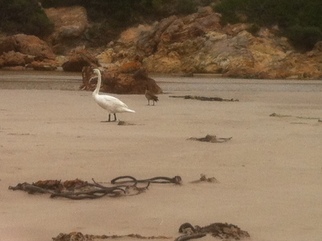 8. Mute Swan seen again by Don with an Egyptian Goose keeping “an eye” on it which probably means that they have another nest in the area. (photo JPG). Comment from Duncan "By the way, I also saw the Mute Swan, but as I was coming back from a windy swim, I did not have a camera to capture it. Glad to know that you set the Queen's mind at rest ! " 9. The Fiscal Flycatcher chick which was blown out of one of June's trees in the wind has survived and it is now almost fully grown. 10. From the family Hendersons - "We have been seeing streams of Cormorants for the last five days (from 20.1.16) in front of our house, arriving early in the morning and then gorging and feasting themselves on silver blue fish some with orange on backbone and black dots on fins. So many that the sea appears to be boiling" (4545) Ed: on investigation these are juvenile maasbanker (horse mackerel) which when dried are bokkems. Also, these skeins of hundreds of Cape Cormorants with about 50% of them being juveniles then streamed back to the area from the slipway east (4548) of an evening. 11. The Greater-striped Swallows are rebuilding again after our 5mm of rain. There were only a couple of puddles - with the one in Rocklands Road having to be supplemented with buckets of rainwater for them to continue building. Please do not report any water leaks at the corner of Gazania and Rocklands Road ! Fauna report 1. From Duncan "You will recall that when we went to the Leopard cave in June last year, we found a large scat on the camera. Now that it is totally dry, Wolfgang has dissected it, and found an almost complete skeleton, albeit in kit form. Here are some photos of the skull, which measured 35 ox 20 mm. I looked up rodent skulls but found myself completely out of my depth as far as looking for the distinguishing features. My best stab turned out to be a Venezuelan Swamp Beaver, except for the size. Any more likely thoughts as to the original owner of the skull? " Ed. reply: What exciting times. Alison and I, on looking independently feel that it is a Cape Mole Rat. Check the incisors and the shape of the skull. 2. Go to the Camera pages for a selection of images that we captured during December. What is interesting is that previously all of the visits were nocturnal. This time there were some crepuscular ones and even a mid-morning visit! 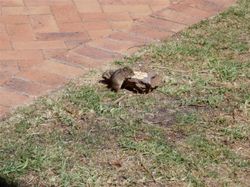 3. Striped mouse, Rhabdomys pumilio enjoying seed for the birds and a common sight in our gardens 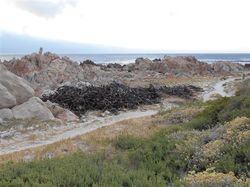 "Illegal" collection of seaweed on our beaches Ed: email to Anuta (Chairperson of REC) "Just to mention and after speaking to Evette - there is a LARGE pile of collected seaweed at "the Point". We thought that this was no longer allowed to be collected here. Is there someone to contact about this ?" Reply: ...the bottom line is that the permit is issued by central government. Both province and local government are dead set against it. Last year, under Janette’s guidance, amongst others, there was a meeting with the permit holder, Mr Roos, and they offered that he rather collect already gathered kelp from CT beaches where they are cleaned. The trade off was that he would leave our beaches alone. He was happy, even saying that he would rather work with communities and keep them happy. Dave Muirhead from Pringle Bay reports that Roos is collecting from their beach and also their dunes under rehab. They were seen actually pulling dry kelp out of the dunes. We are all upset that he has not kept to his undertaking, but legally there is nothing we can do. We have to wait for the Coastal Management Plan to be signed off and then they can include exclusion zones, much like overlays, to protect specific areas from specific activities. But, that’s still a long wait. Janette reported to Neville Green who is also unhappy about it. Ed: If, there is anyone out there who can help with more names of higher authority then please let Anuta know !! And finally - I am not getting a lot of “feedback” from you botanists (or would be ones) out there. Come on even the photographs are easy – plants do not move !!
Rooi Els is going to be VERY fortunate because there are several interested, keen and knowledgeable aves, flora and fauna households moving here “more” permanently - bring it on............... ! Soooooooooooooo, to end this exciting report. I hope that you have noticed that we are now being serenaded at dusk by mole crickets instead of cicadas who seem to have "moved off" in this cooler weather. ENJOY, ENJOY and keep ALL sightings coming preferably with a photograph. happy sightings etc. Tweet me on [email protected] |
Community Sightings are co-ordinated by Helen JonesLong time resident, twitcher and nature lover. Archives
March 2016
Categories |
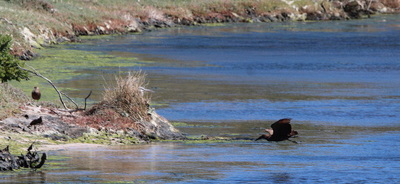
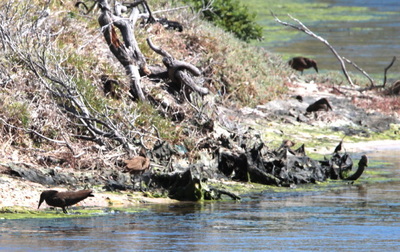

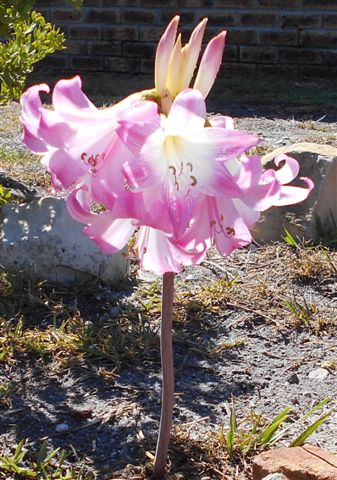
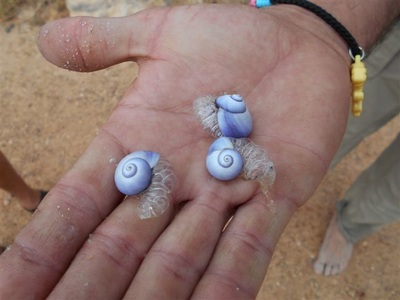
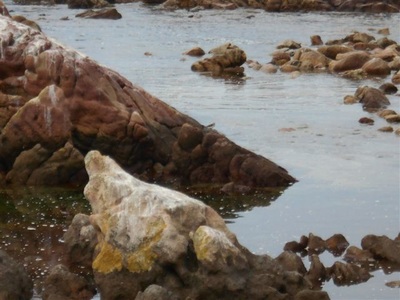
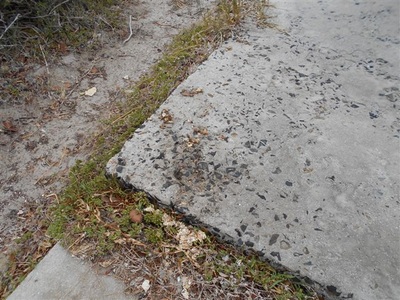
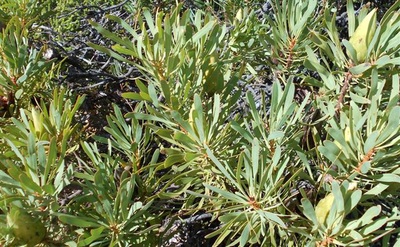
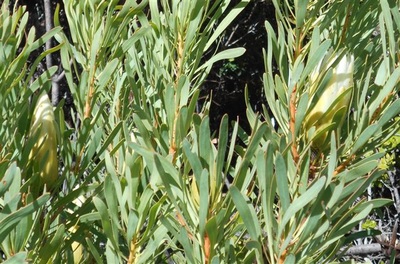
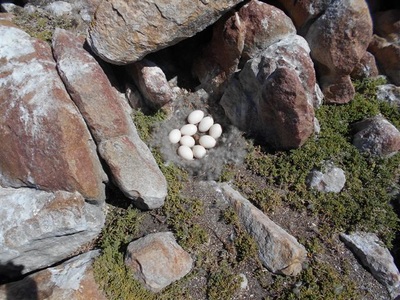
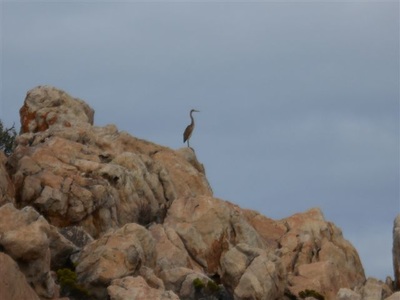
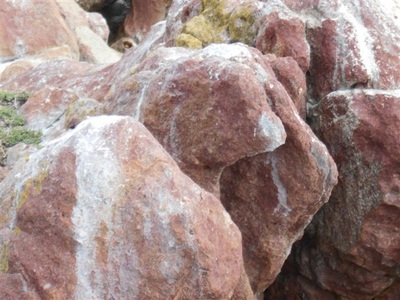
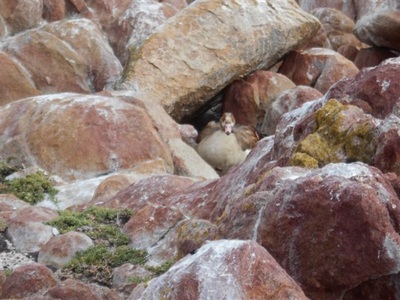
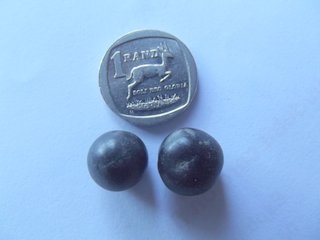
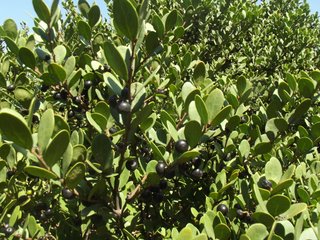
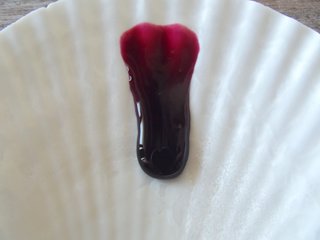
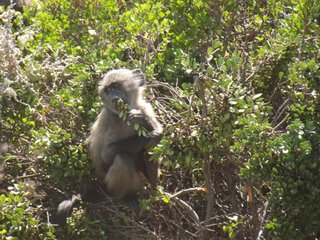
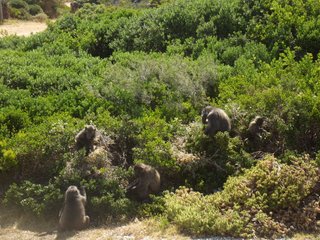
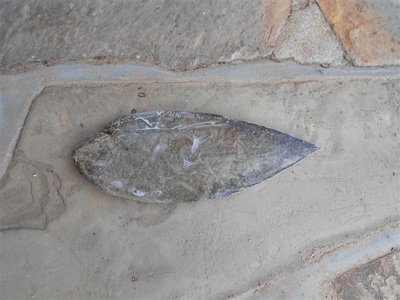
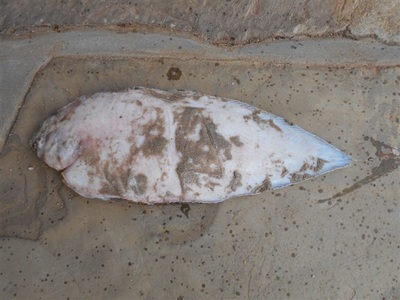
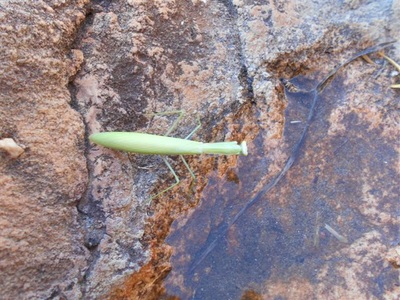
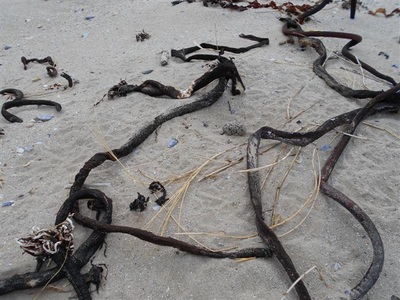
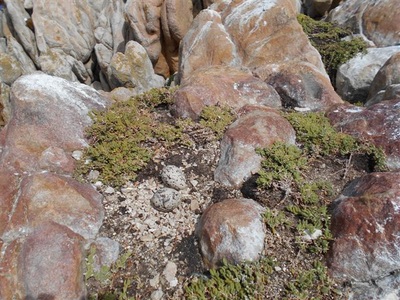
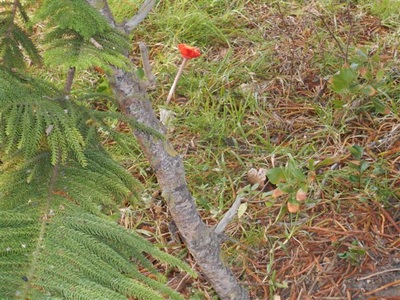
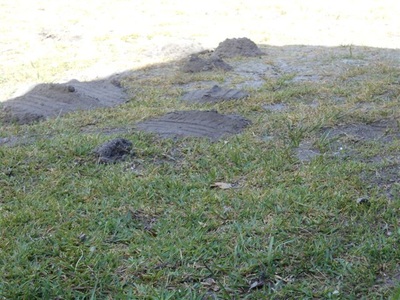
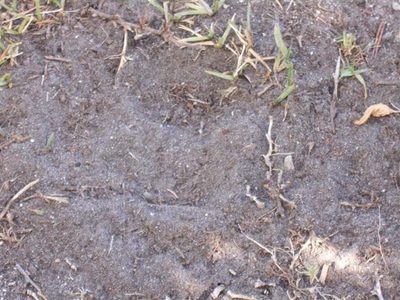
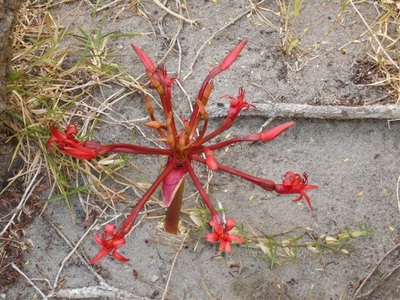
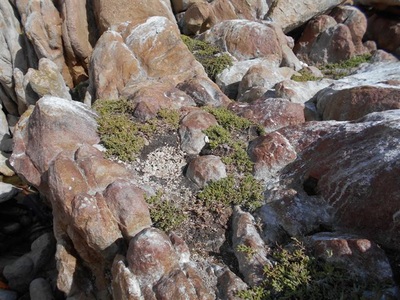
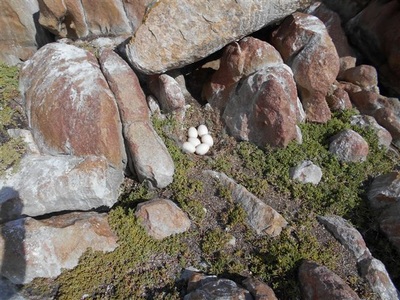
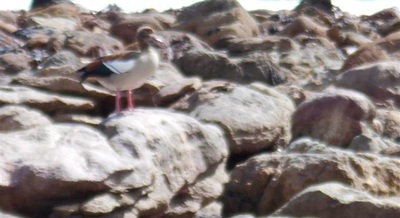
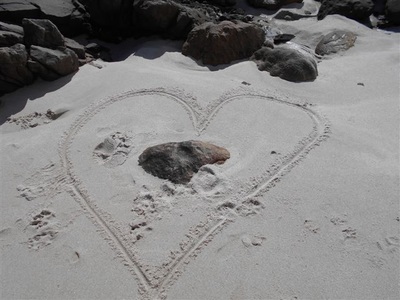
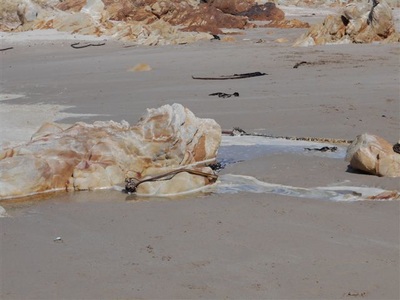
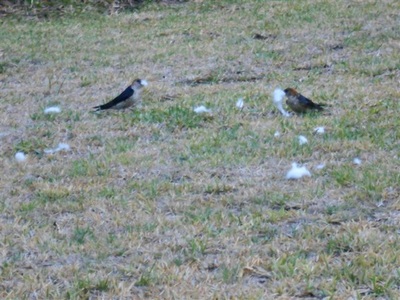
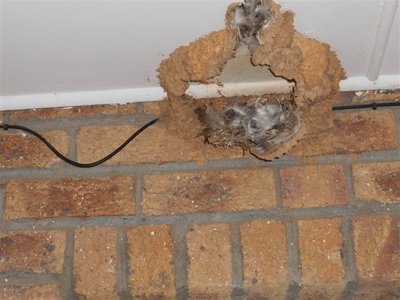
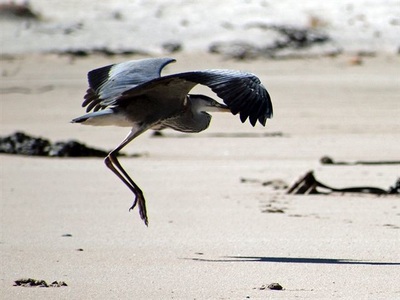
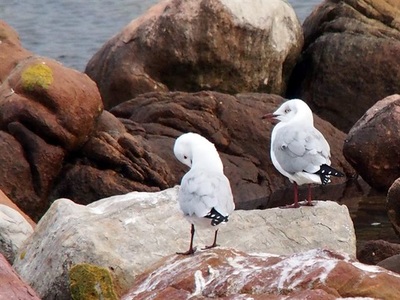
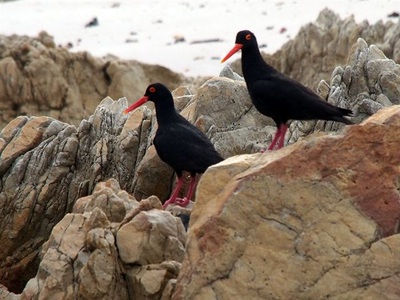
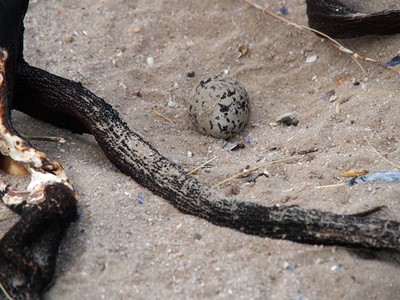
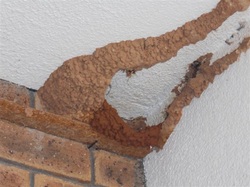
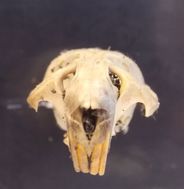
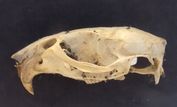
 RSS Feed
RSS Feed
